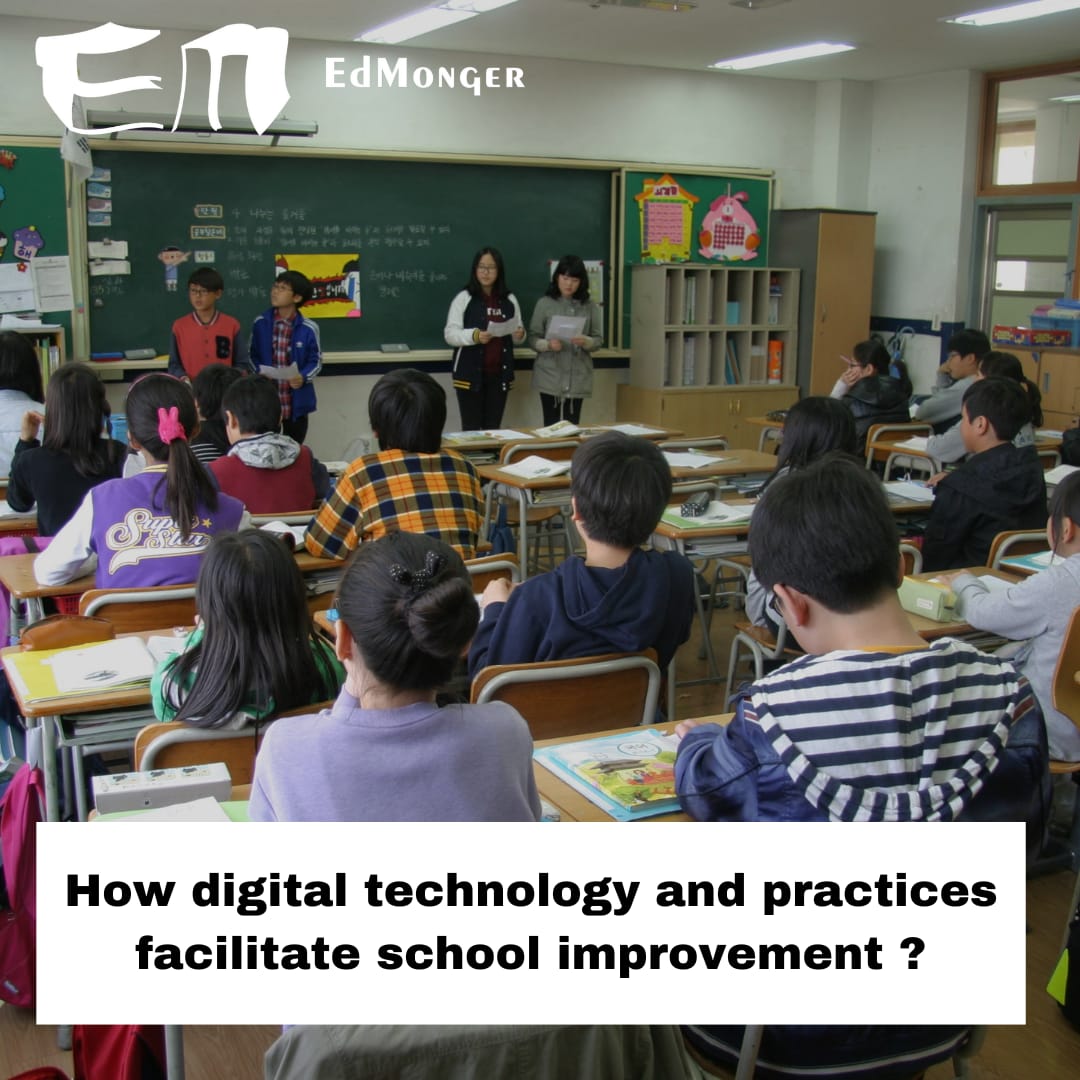The state of digital technology in education has dramatically improved since the advent of the internet. Many schools now employ touchscreen technology. Laptops and cell phones can replace workbooks. Wikis, apps, and instructional websites are essential for students to learn.
With 95% of teachers using technology in the classroom, digital teaching approaches are becoming more and more common around the globe. As technological advancements drive digital transformation, teachers in the school assist students in becoming a part of this advancement and developing the skills necessary for their success.
Digital technology in the classroom can boost student participation, enhance their skills, make lesson plans interactive, and support individualized instruction.
Classes can be more dynamic and exciting using digital technology in schools, such as video, augmented reality, robots, and virtual classrooms. These technologies in education not only engage students in learning new concepts but also encourage teamwork among students and aid teachers in gathering information about their performance.
It’s critical to remember that technology is a tool for education, not a goal. The promise of educational technology depends on how instructors employ it and fulfil students’ needs.
Benefits of Digital Technology in Classroom
These are just a handful of the numerous ways educational technology can enhance students’ and teachers’ learning experiences. Let’s know how:
Benefits of Digital Technology in Education for Students
Students can learn their concepts efficiently using the three main learning preferences—Audio, Visual, and Kinesthetic.
Audio Learning
Audio learning is the best digital way that helps auditory learners. Online connections with peers and teachers are made possible for auditory learners through Zoom and Google Meet. Younger kids can record their voices to practice reading using reading applications on tablets and audiobooks and hone their listening and communication skills.
Visual Learning
Images and videos help a lot in grasping the concepts. In digital learning using visuals, the key ideas can be outlined using diagrams and images on PowerPoint presentations (inside Google Classroom). Visual learners will comprehend and concentrate more readily if videos offer comprehensive ‘walkthroughs’ of complicated concepts.
Kinesthetic Learning
For science and math students, the University of Colorado Boulder runs the website Phet Interactive Simulations, which offers educational games. Kinesthetic abilities, such as the capacity to construct an atom and carry out an online experiment on solubility, can be developed through the usage of these games.
Online forums
Technology may foster inclusiveness online, at school, and at home by increasing collaboration and involvement. Students can ask questions and exchange ideas in online forums that allow them to speak to a worldwide audience through hashtags, group chats, and event pages.
Working together online
Students can work with others outside their social group to gather knowledge, inspiration, and educational opportunities.
By incorporating digital technology into the classroom, teachers may aid students in becoming ready for the difficulties of the job. Likely, someone has already formed a team or a business to address the issue. Thanks to the tech revolution, students are better prepared for peer collaboration in the classroom or at business.
Benefits of Digital Technology in Education for Schools
Leverage Techno-Digital Environment in School
Teachers who want to foster active learning and engagement can use technology to their advantage. Online polling and Quizlet are two examples. Using QR codes and embedded linkages, the technology also enables a flexible learning environment in which textbooks can be digitally transformed. Students can review and test out the course materials smoothly on their own.
Advanced Tools
By incorporating new tools, teachers can profit from having a solid technological foundation. The software can be used for project-specific software or to build flipped classes. By watching recorded lectures, students can not only be better prepared for class discussions but also their confidence level will be increased.
Reduced Workload
By automating repetitive processes, introducing new technology can lessen teachers’ workload. Exam creation and grading tools are available. Numerous students will submit their test scores to a database that quickly verifies each student’s performance.
Active Communication
The process of communicating with families and kids can take time. Through social media and texting, teachers may communicate directly with each student and parent while reaching their entire community. You may post to social media accounts and sync your calendars utilizing online spreadsheets.
Conclusion
Schools play a crucial role in helping students develop skills that will prepare them for the future. As a result, schools must keep developing to match the needs of the digital age.
If schools want to be a part of digital technology, they need to be technologically inventive. They need to work on a few essential components like the role of educators, digital competence, structure change, participation management, leadership, learning organization, and IT management. If they focus on all these components, they will see considerable growth and an influx of student admissions.




